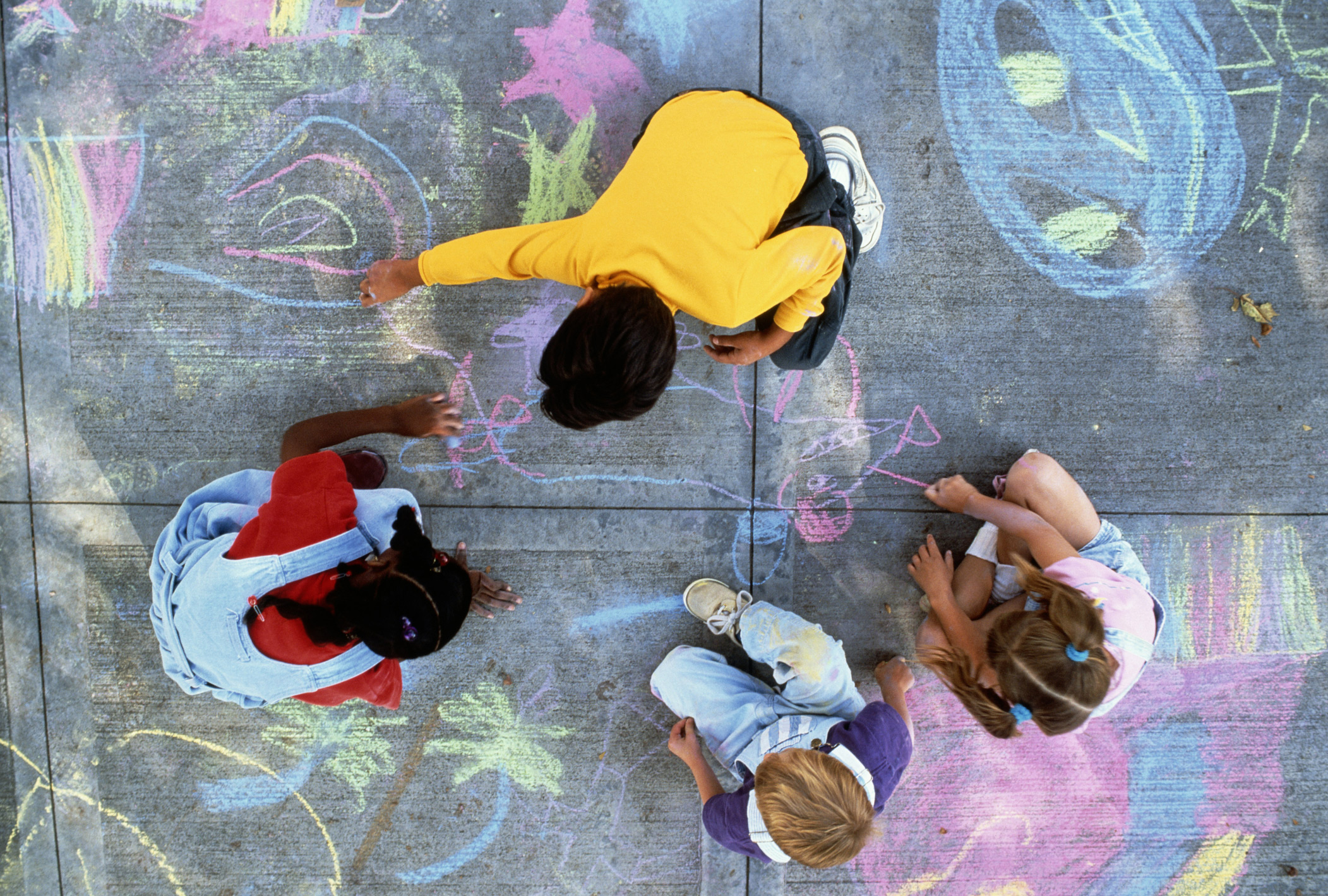It can be difficult for parents to explain the intricacies of concepts such as racism and injustice to children. Here’s some help.
Authors’ note:
As white women, we want to acknowledge that our experiences are very different than the experience of our black colleagues and friends. We have consulted with people we trust from the BIPOC community on this article and want to be clear that we are writing from our perspective primarily to adults who care for children with white skin, as we know that we have much work to do in educating ourselves and becoming better advocates in the active fight against racism and racial injustice.
Over the last several months, events and public grief related to the deaths of George Floyd, Breonna Taylor, Ahmaud Arbery, Elijah McClain and many others have highlighted racism and injustice in our communities, inspiring movement to action. For BIPOC (Black, Indigenous, and People of Color) families, a strong recognition of the reality of injustice and suffering based on the color of their skin has been unavoidable. For others, the realities of racism have entered into their awareness for the first time, inviting self-reflection and personal growth to be a part of positive change when they witness inequality. Many of us are pausing to ask: What now? How do we continue these conversations, especially with the children in our lives?
Much like the adults who care for them, today’s children are also acutely aware of what is happening in their communities, on their televisions, and in their dinnertime conversations. Children, at their very core, seek connection with people and their environment, and these relationships shape what they will come to believe and value about themselves and others. Children who experience racism in their day-to-day life can encounter adverse health outcomes and emotional trauma, shaping their experience of the world at a young age. In these moments of difficulty and challenge, children look to the supportive adults in their lives to help them understand and cope with these social and cultural realities.
In parenting, it can be difficult to explain the intricacies of concepts such as racism and injustice in the lives of our children; we may be concerned about how, when, or where to begin the conversation, but simply creating the opportunity for dialogue is the most important first step. Children of all ages often fear the things they do not understand, as is the case for adults as well. However, silence can be dangerous. Silence can not only fuel fear but can also communicate that issues such as racism and injustice are either 1) undeserving of attention, or 2) taboo subjects that people should not discuss. As parents/caregivers, teachers, professionals, and support persons for children in our communities, it is important to open conversations about racism that:
- Name and define the concepts children are seeing, hearing, and experiencing. It is important to concretely explain race as “a person’s skin color,” and that racism is “any time a person treats or talks about someone differently based on the color of their skin.” Further, it is important to help them acknowledge that in the past and present of the United States, racism has primarily targeted people with black, brown, or non-white skin. These big and small moments of racism are injustices, “which is another word for unfair.”
- Invite your child to share their thoughts about or experiences with racism. They may share from their own experiences or what they have seen in the media, books at school, or events and discussions in their community. If your child has experienced, witnessed, or perpetrated racism, providing space to hear their experience with compassion is the most important task. If your child has misconceptions, it is important to address these when they arise by providing honest and accurate information.
- Take time to share your own feelings about and experiences with racism. Whether you have witnessed or been directly harmed by racism, it is important to help your child understand the different ways that racism can look and feel.
- Help your child identify ways that they can cope with their feelings about racism, and actions they can take to address racism in their schools and peer groups. Some children may seek out more information to help them manage their feelings, whereas others may choose to take actions such as joining local protest opportunities or sending letters to their community leaders.
- If you come from a less diverse family background, intentionally integrate toys, games, media, and books that feature BIPOC characters and history in your home to help continue these conversations throughout childhood and adolescence. This can also include visiting museums or historical sites to learn firsthand about the experiences of different groups of people. Beyond exposure, the larger hope for transformation will be found in relationships. Children engage creative activities, play sports, eat meals, attend school, and participate in spiritual learning in community with other children. Are the communities your children belong to diverse? Seek out intentional spaces that bring opportunities for authentic and lasting connection.
- Support your child in exploring and understanding your own unique cultural background. Looking through family photo albums, making family recipes, or practicing family traditions can be excellent ways for your child to connect and identify with their culture and begin to see the importance of honoring the uniqueness of others.
Unsure of how to start the conversation? We recommend printing copies of this coloring page (adapted from additional free resources available online) and coloring together as a family. With curiosity, you can ask, “I wonder, what does the word justice mean to you?” and “I wonder, what does justice look like?” Similarly, invite your family to share examples of how injustice has appeared in the places where you live, work, learn, and play together. Inviting brave conversations while engaging in a creative activity provides space for curiosity and wonder, providing a foundation of the trust and openness needed to continue these conversations and translate words into action.
Talking with your child about race and racism will be an ongoing experience. As they learn and grow, they may find themselves with new thoughts, feelings and questions. Sometimes the answers may come easily, but other times they may be difficult or simply unknown, and it’s OK to acknowledge these feelings and uncertainty with your child. What is most important is to navigate that space together, seeking out extra support when needed, and modeling a lifelong willingness to learn that will empower your child to take action as they encounter racism and injustice in their community.
This post was written by the Rev. Amanda Borchik, MDiv, BCC, Staff Chaplain, and Jessika Boles, PhD, CCLS, a certified Child Life Specialist for the Pediatric Critical Care Unit, at Monroe Carell Jr. Children’s Hospital at Vanderbilt.

Monroe Carell Jr. Children’s Hospital at Vanderbilt is taking a careful approach to help keep your child and family safe, along with team members. Safety actions follow recommendations by the Centers for Disease Control and Prevention and other trusted experts.
COVID-19 is not the only threat to your child’s health and well-being. Many illnesses and conditions can cause serious problems. Good preventative care and early treatment can save lives. Please don’t delay important healthcare for your child — including all-important immunizations.

